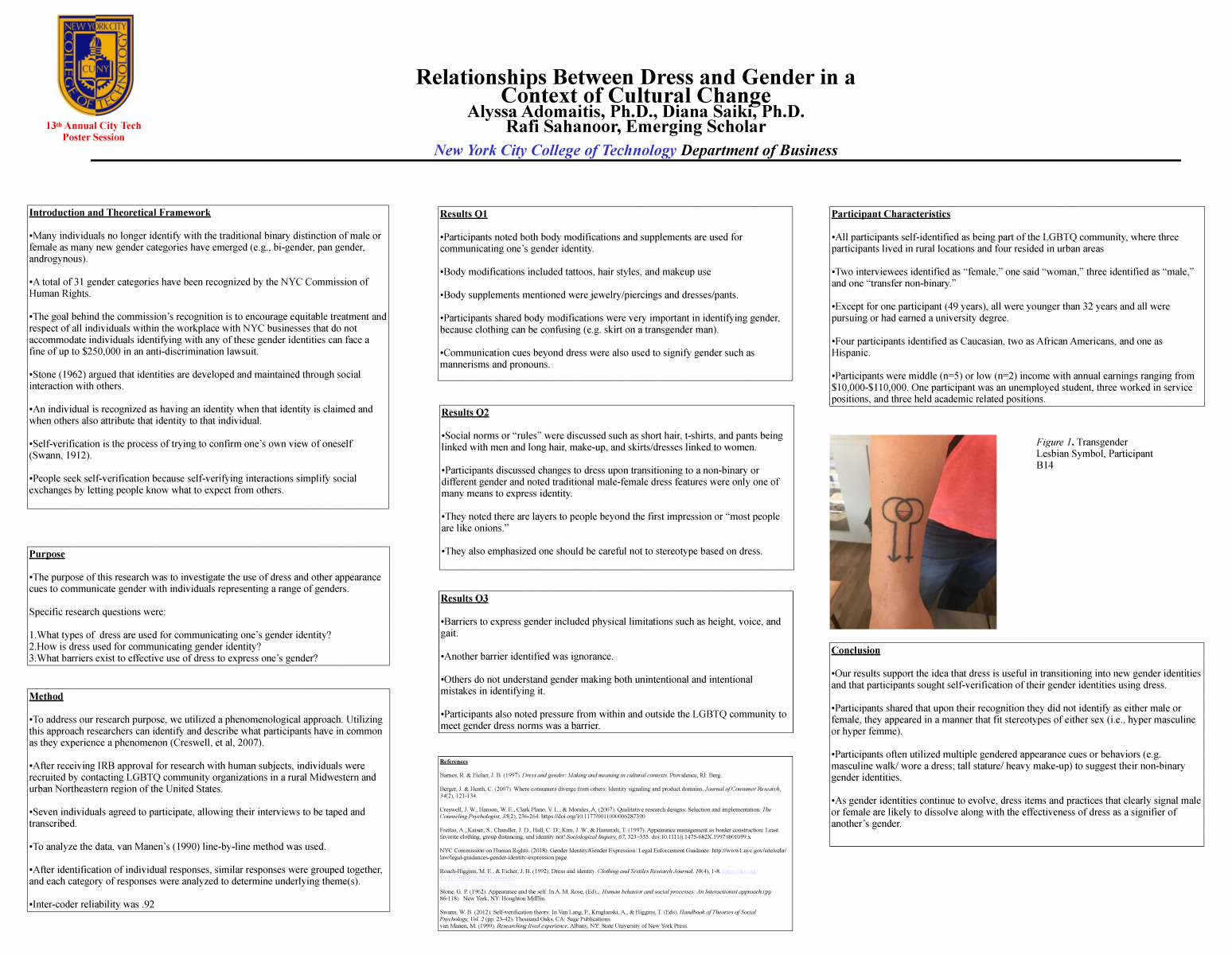Please view the posters presented at the 18th Annual CityTech Faculty and Student Research Poster Session below. You can click on each poster to enlarge it and view the PDF version under the poster abstract.
We thank all presenters for sharing their innovative and informative research with the CityTech community and beyond!
7. Relationships Between Dress and Gender in a Context of Cultural Change
As societies move towards modernity and experiences evolution, there can be confusion over the concepts of gender identity and gender expression. The American Psychological Association defines gender identity as, “A person’s deeply-felt, inherent sense of being a boy, a man, or a male; a girl, a woman, or a female; or an alternative gender (e.g., genderqueer, gender nonconforming, gender neutral) that may or may not correspond to a person’s sex assigned at birth or to a person’s primary or secondary sex characteristics” (American Psychological Association, 2015, p. 834). The concept is further delineated by the roles assumed and acted upon based on socially accepted environmental factors (American Psychological Association, 2015). According to Polderman et al., (2018), gender identities can be divided into two broad classifications. These classifications are cisgender, where a person’s gender is assigned at birth as determined by the presence of genitalia, and transgender, where a person’s assumed gender is different from the one assigned at birth. Gender expression, in contrast, is manifested through dress, appearances, and mannerisms, which may or may not observe socially established norms (Koene, 2017). Gender identity is different from gender expression. For example, an individual might identify as a transgender male but the dress, appearance, and mannerisms of this individual may signal to others that individual is a female (Lowry et al., 2018). Individuals always engage in some form of dress when participating in the public sphere (Entwistle, 2015). Dress consists of body modifications (e.g., tattoos, piercings) and supplements (e.g., hats, scarves, clothing) added to the body (Roach-Higgins & Eicher, 1992). When gender was a simple binary distinction, one means by which one individual’s gender was rather successfully signaled and inferred by others was through dress and appearance cues (Barnes & Eicher, 1997). Indeed, specific body supplements and body modifications, including their color, style, and details, have traditionally been viewed as masculine or feminine and consequently, in some cases, worn almost exclusively by men or women (Workman & Johnson, 1993). When individuals appeared wearing these forms of dress inferences of gender were easily made and often accurate. With the recognition of 31 different genders by the NYC Commission of Human Rights, dress may no longer be effective at communicating gender identities. Thus, the purpose of this research was to investigate the use of dress and other appearance cues to establish and communicate gender identities with individuals representing a range of genders other than cisgender. Specific research questions were addressed with individuals that self-identified as members of the LGBTQ community. These questions included (1) what types of dress are used to communicate gender identity? (2) how is dress used for communicating gender identity? (3) what barriers exist to effective use of dress to express one’s gender? View or download a PDF version of this poster.



